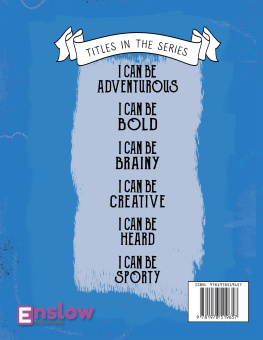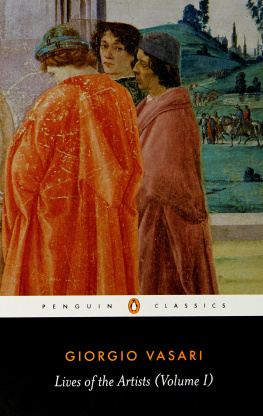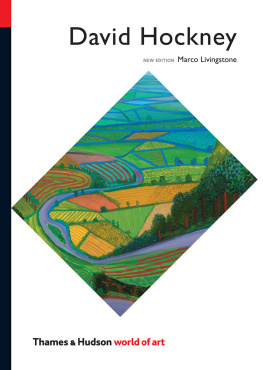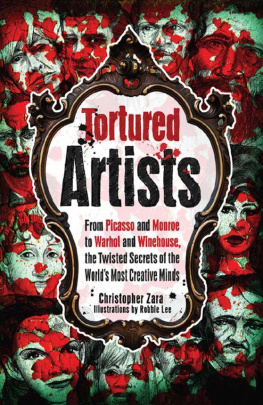Allen Lane is part of the Penguin Random House group of companies whose addresses can be found at global.penguinrandomhouse.com.
Let the conversation begin...
Introduction
Everything started with Peter Fischli and David Weiss. I was born in May 1968 in Zurich and then again seventeen years later when, as a teenager, I met Peter and David. It was the beginning of a neverending conversation with artists. My other important source of inspiration was Giorgio Vasaris Lives of the Artists, especially because he doesnt differentiate between artists and architects and sees some of his contemporaries as historic figures.
The book that convinced me I had to record my conversations with artists was The Brutality of Fact which gathered the interviews David Sylvester had done with Francis Bacon over many decades. Although Id had many exchanges with artists, I only started to record them around 19911993 thanks to Felix Gonzalez-Torres. Felix thought it was too formal to sit in a TV studio, as we had done, and he said we needed to find a more informal way of having a conversation, just record it as if we were in a caf. That led to the format I have used ever since, and I have these conversations wherever they can happen.
Then Rosemarie Trockel told me later that she thought it was important to talk to a range of people not only artists of my own generation, or of my own time, but also pioneers in their eighties, nineties and one hundreds, and to make sure I recorded their memories, which could be seen as a protest against forgetting.
I would always use the word conversation rather than interview for what I do once it starts it is infinite and doesnt stop. It can also be that sometimes one just has to come up with a different format. Such is the case with Hans-Peter Feldmann, who was in my first kitchen show, and with whom I have been working and curating projects for more than twenty-five years. Throughout this friendship he always resisted the idea of a recorded conversation until about five years ago when we decided that I would send him a question by email and he would answer with an image. It has continued ever since. I did something similar with Louise Bourgeois: I would send her a question and she would answer by emailing back a drawing.
Early on, Alighiero Boetti encouraged me to ask not only what artists can do in the existing structures, but what they would like to do. He told me that artists are often invited to do the same thing over and over solo and group shows in museums, biennales and galleries but there are so many other possibilities, so many other projects that they might want to do. This is why I often ask about their unrealized projects.
So I think the key thing is to listen; in a way conversations are all about being able, or learning, to listen. Hearing about these unrealized projects is for me maybe the most important thing because then I can sometimes help make them happen.
In a way, Ive been thinking about these conversations as if they were a garden Thomas Bayrle told me early on that you need different knowledge gardens. After I did my first kitchen show in 1991, I needed such a garden of research that would give me new ideas, and thats when I started to do conversations with scientists, architects, poets and novelists, so that there would always be parallel things I would do, or parallel realities. Ive got about 2,500 hours now and they can obviously be categorized in different ways.
I hope this version, this collection of nineteen conversations with artists and architects from all over the world, which is a small fragment of the archive, can be a toolbox of creative thought. We have brought together art and architecture (as Vasari did in the original Lives of the Artists) because keeping disciplines together is more urgent; often the connections between supposedly different areas are the most inspiring, and many of the figures here have worked in a variety of disciplines. This book aims at going beyond the fear of pooling knowledge.
Hans Ulrich Obrist
Hockney has three different studios: one in Bridlington, East Yorkshire, one in South Kensington, and one in Los Angeles. In 2006 I made my first visit to South Ken, and then Hockney invited me to Bridlington. What follows contains extracts from the conversations we had during both of these studio visits. When we met, Hockney had just moved back to Yorkshire after a long stay in Los Angeles, where he has his third studio, and the interview covers all three studios and how, rather than belonging to one place, Hockney works with the geography of each to create his paintings.
Hockney has always been a painter, but when we met he was becoming interested in technology and how digital technology can be a tool for an artist. He has always been interested in mediums beyond painting, including making films and writing books, but he also makes digital paintings, on his iPhone and iPad; but of course he always returns to painting. Painting never stops.
Mass media/social media
DAVID HOCKNEY: The image is very powerful and very memorable.
HANS ULRICH OBRIST: Its quite early on in the film [Fritz Lang, Metropolis, 1926].
DH: They all live underground by the end of the film and this is what struck me: if you film a crowd with one camera theyre one mass, but if you film it with eighteen cameras theyre not, theyre all individuals. Thats whats happening elsewhere in the world. The mass world is dying because of technology. And a new world is emerging where the individual has more power. And Im wondering if images Did that image in that 1926 film, did that influence in any way events afterwards? The view of the masses? Did it? Because the masses started to be murdered.
Or did it anticipate it as a feeling? It could be either way














